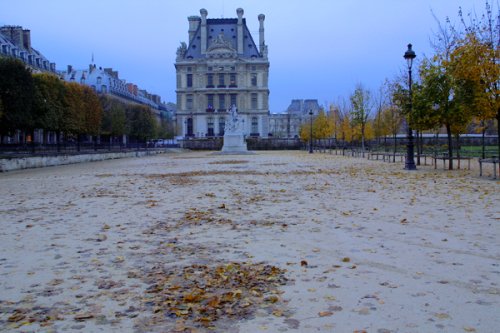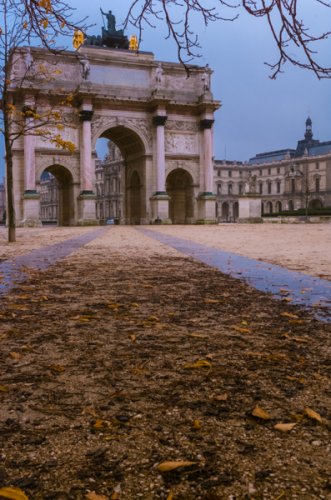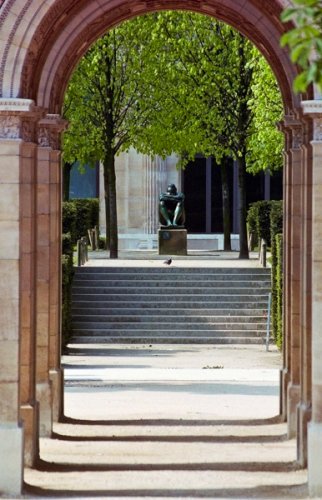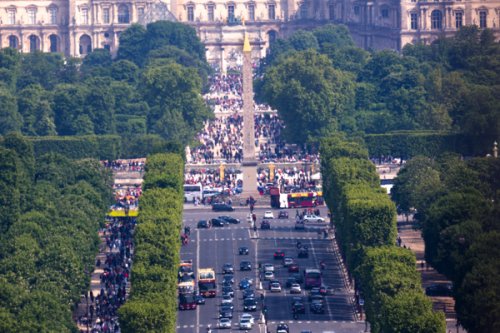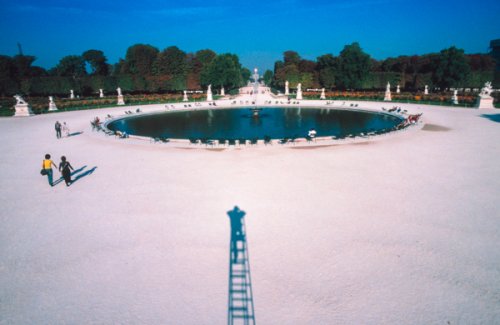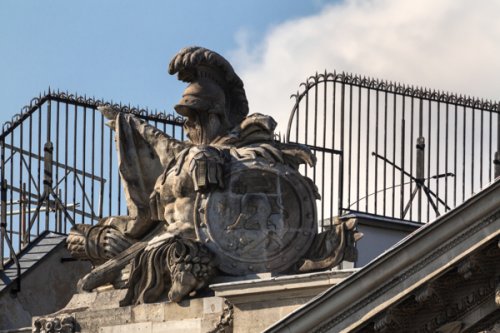Jardin des Tuileries and urban planning.
An ancestor of the Grand-Paris
Urban planning is a natural evolution of the division of agricultural plots in a combination of territorial sciences and aesthetics. In this respect, the conception of a place such as the Jardin des Tuileries, beyond Louis XIV’s desire to open Paris to the west, remains a reference for our thinking on urban planning.
As the chronology of the Jardin des Tuileries and these photographs show, this garden is the matrix of all the gardens of Le Nôtre. It is also a place that is much less ordered than it appears. A place that allows itself, by relying on this structuring order, to give birth to a disorder just as structuring but, as for him, only apparent. In fact, as soon as one takes a less codified look at the Tuileries, using other axes, different from those that seem to be imposed by Le Nôtre at first glance, one discovers a garden whose structure is different from that of the Tuileries. One then discovers a garden whose layout appears to be close to that of English gardens.
The perspective
Perspective means discovering a sideways glance that suddenly makes a Roman emperor emerge from the branches as if he were growing like a plant planted a few centuries ago by a gardener full of hope in its potential for development. It is to discover these axes discreetly proposed by Le Nôtre. Thus, when approaching the garden from the Rue de Rivoli, from the Place du Palais-Royal, one discovers a Retour de chasse (Return of the Hunt) raising a raging fist beyond a hedge that has suddenly been transformed into a symbolic barricade. This transformation makes this Retour de chasse a Gavroche-like character so celebrated by Victor Hugo and accompanied by a majestic Jules Ferry who watches over Waldeck-Rousseau in the distance, ardent defender of Dreyfus and promulgator of the law legalizing professional workers’ and employers’ unions.
Today, to walk through this garden is of course to discover this perspective, the driving force of the Renaissance and at the same time the material symbolization of this quest for the infinite ; the discovery of other material and immaterial horizons stemming from this belief in a world in perpetual motion, in the axis of a potentially radiant future. It is this look which propels us forward, towards this infinite always new as, later, Charles Baudelaire will like to proclaim it.
A focal point
To walk in the Jardin des Tuileries is also to discover a unique place where perspective, thanks to the two Napoleonic arches, functions in perfect symmetry, the focal point of which is the obelisk of the Place de la Concorde, and where the green space and the city respond to each other in an unbroken alternation. It is this natural absorption of this space, originally impossible to integrate since it was closed off by the fourth side of the Louvre Palace, that makes this miracle possible, not only the integration of these two arches without a blow, but also the integration of the Carrousel Garden into the space of the Tuileries Garden.
No more than perspective, the Tuileries Garden is not a fixed space. It is a garden that cannot exist without the space that will become the Champs-Élysées. This garden is the fruit of an urbanist vision based on the thinking of Le Nôtre and the King, but rethought well beyond and in particular by those in charge of the development of Paris in the 19th century. In this, Louis XIV won his bet well beyond all his expectations : Paris has developed well to the West and well beyond his aspirations, since this West extends today to La Défense. This is the other miracle of the Tuileries : its capacity for integration. The Jardin des Tuileries, a place where Nature and Culture are not opposed, but rather extend and enrich each other in a cosmos where everything is ordered to the measure of humanity.
The Tuileries Garden is a model taken up in many places and well beyond the 17th century ; but however in a city-nature integration often less successful. How, in this period of development of Greater Paris and, more broadly, of elaboration of a new urban mesh integrating human space and green space, even cultivated space, can this model be one of the points of support for a refoundation of this urban space that characterizes our humanity ?
Hervé Bernard Rvb 2014-2015
 Regard sur l’image
Regard sur l’image
